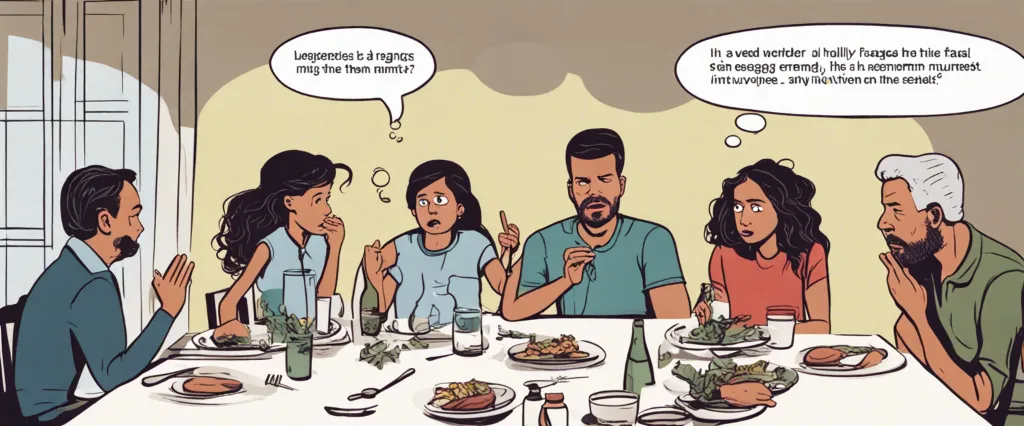——The Family Crucible by Augustus Y Napier & What Our Children Teach Us by Piero Ferrucci

Literature has long been regarded as a window into the complexities of human relationships and dynamics within family units. Within the realm of family therapy, two influential authors, Augustus Y. Napier and Piero Ferrucci, have explored the intricacies of family dynamics through their respective works, “The Family Crucible” and “What Our Children Teach Us.” While both books delve into the complexities of family relationships, they approach the topic from different angles, offering unique perspectives and insights.
“The Family Crucible,” written by Augustus Y. Napier, is a seminal work in the field of family therapy. Published in 1988, it chronicles Napier’s experiences as a therapist working with a troubled family, known as the Brice family, and provides a detailed account of his therapeutic journey with them. Napier adopts a systemic approach, focusing on the interplay of various family members and their roles in perpetuating dysfunctional patterns. Through the lens of family systems theory, Napier explores the impact of family narratives, power struggles, and underlying emotions on the overall health and functionality of the family unit.
On the other hand, Piero Ferrucci’s “What Our Children Teach Us,” published in 2001, takes a different approach to understanding family dynamics. Ferrucci, a psychotherapist, draws on his personal experiences as a parent and therapist to explore the profound lessons that children can teach adults. Far from being a parenting guide, Ferrucci invites readers on a reflective journey, illuminating how children can provoke personal growth, challenge assumptions, and open up new avenues of understanding. Ferrucci’s work focuses on the transformative power of parenting and the reciprocal nature of learning within the parent-child relationship.
While both Napier and Ferrucci offer valuable insights into the intricate workings of family dynamics, their books differ in terms of methodology and perspective. Napier’s “The Family Crucible” provides a clinical perspective, offering case studies and a systematic framework for understanding family dynamics, while Ferrucci’s “What Our Children Teach Us” delves into the intimate and personal, examining the transformative potential of the parent-child relationship. By juxtaposing these two works, this comparative study will shed light on the multifaceted nature of family dynamics and the different approaches that can be taken to address familial challenges.
Through an analysis of the therapeutic approaches, key themes, and central ideologies presented in both books, this comparative study aims to illuminate the diverse perspectives and insights offered by Napier and Ferrucci. By examining the similarities and differences between “The Family Crucible” and “What Our Children Teach Us,” we can gain a more nuanced understanding of the complex dynamics at play within the family unit and the diverse perspectives available to therapists and parents alike.
Brief Summary of Two Books
The Family Crucible by Augustus Y Napier
“The Family Crucible” by Augustus Y Napier is a powerful and thought-provoking book that explores the dynamics of family relationships and the impact of unresolved conflicts within a family system. The book follows the story of a fictional family, the Brice family, as they undergo therapy with a renowned family therapist, Napier himself.
The Brice family consists of parents Carolyn and David, and their teenage children, Claudia and Don. Each family member is struggling with their own personal issues that are wreaking havoc on the family as a whole. Carolyn is overprotective and controlling, David is emotionally distant, Claudia is rebellious, and Don has taken on the role of the family peacemaker.
Through a series of therapy sessions, Napier delves deep into the family’s dynamics, uncovering layers of hidden emotions, unspoken fears, and long-standing tensions. He helps the family members confront their individual issues while also addressing the overarching problems that arise from the way they interact with one another. Napier uses various therapeutic techniques and interventions to help the family gain insight into their dysfunctional patterns and work towards healing.
“The Family Crucible” highlights the importance of addressing underlying issues within a family system rather than solely focusing on individual symptoms. It emphasizes the idea that effective family therapy can bring about long-lasting change and improve the overall well-being of each family member.
Throughout the book, Napier also incorporates his own reflections as a therapist, offering valuable insights into the challenging process of family therapy and the complexities of working with families. He provides readers with a behind-the-scenes look at the therapeutic journey, making it relatable and informative for both professionals and individuals seeking to deepen their understanding of family dynamics.
In conclusion, “The Family Crucible” is a captivating and informative book that explores the struggles and transformation of a fictional family through the lens of family therapy. It offers valuable lessons on the importance of addressing family dynamics and working together to rebuild relationships, making it an essential read for anyone interested in the field of family therapy or seeking personal growth within their own family unit.
What Our Children Teach Us by Piero Ferrucci
What Our Children Teach Us” by Piero Ferrucci is a thought-provoking exploration of the profound lessons that children offer to their parents and caregivers. The book delves into the ways in which children can help adults develop qualities such as curiosity, presence, kindness, forgiveness, and authenticity.
Ferrucci emphasizes the importance of deepening our understanding of children as unique individuals with their own wisdom and perspectives. Drawing from personal anecdotes, psychology, and philosophy, the author illustrates how children possess a natural wonder and openness that can awaken similar qualities in adults.
The book examines various aspects of parenting, including communication, discipline, and the challenges of balancing boundaries and freedom. Ferrucci poses thought-provoking questions and offers practical suggestions for nurturing healthier relationships with children, encouraging their growth, and fostering a harmonious family environment.
In addition to exploring how children can teach us essential life skills, Ferrucci explores the profound impact that becoming a parent has on personal growth, empathy, and compassion. Topics such as the complex dynamics of the parent-child relationship, the influence of cultural norms, and the role of spirituality in parenting are also addressed.
Overall, “What Our Children Teach Us” provides readers with a refreshing perspective on parenting and encourages a shift in mindset towards seeing children as influential teachers in our own journey of self-discovery and personal development.
Comparison between Two Books

Similarities in Intimacy
In both “The Family Crucible” by Augustus Y. Napier and “What Our Children Teach Us” by Piero Ferrucci, the topic of intimacy is explored in a profound manner. Despite having different focuses, both books highlight the significance of intimacy within familial relationships and emphasize the transformative power it holds.
One similarity between the two books is their acknowledgment of the essential role of vulnerability in establishing intimacy. Napier conveys this through the lens of family therapy, emphasizing that for a family to grow and foster deeper connections, members must be willing to expose their vulnerabilities and share their true selves. Ferrucci echoes this sentiment, emphasizing that parents must be open and honest with their children, allowing them to see their vulnerabilities and true emotions. Both authors emphasize that intimacy requires individuals to let go of their defenses and masks, which allows for a genuine, profound connection.
Another similarity lies in the recognition of the power dynamics that can hinder intimacy. Napier delves into the concept of power struggles within families and highlights how these struggles obstruct true intimacy. Similarly, Ferrucci emphasizes the importance of equality in parent-child relationships, noting that a lack of balance and respect destroys the intimacy between generations. Both books underline the significance of addressing power imbalances and creating an atmosphere of equality and mutual respect to nurture intimacy.
Moreover, both authors stress the idea that intimacy requires active and conscious efforts from individuals involved. Napier suggests that individuals should practice self-reflection and awareness to better understand their own emotions and motivations, allowing them to genuinely connect with others. Ferrucci also advocates for self-awareness, highlighting that parents should examine their own behaviors and beliefs to create an atmosphere where intimacy can flourish. Both books encourage individuals to take responsibility for their own emotional well-being as a foundation for building intimacy with others.
Ultimately, both “The Family Crucible” and “What Our Children Teach Us” highlight the vital role of intimacy in familial relationships. They emphasize the need for vulnerability, address power dynamics, and stress the importance of active engagement. Intimacy becomes a transformative force in the lives of individuals, fostering deeper connections, emotional growth, and a sense of belonging within the family unit.
Divergences in Intimacy
The Family Crucible by Augustus Y Napier and What Our Children Teach Us by Piero Ferrucci are both insightful books that delve into the complexities of family dynamics and relationships. While they touch upon similar themes, such as the impact of family on individuals, they approach the topic of intimacy in distinct ways.
In The Family Crucible, Napier explores how family systems can shape an individual’s capacity for intimacy. Drawing on his experiences as a family therapist, he emphasizes the importance of understanding the underlying dynamics within a family unit to achieve intimacy. Napier argues that unresolved conflicts, secrets, and unspoken emotions can hinder genuine intimacy between family members. He advocates for open communication as a means of fostering intimacy, encouraging family members to express their true feelings and engage in meaningful dialogue. The Family Crucible focuses on the constructive aspects of building intimacy and highlights the potential for personal growth through active participation within the family system.
On the other hand, What Our Children Teach Us by Piero Ferrucci takes a slightly different approach to the concept of intimacy. While also acknowledging the significance of family and its impact on personal development, Ferrucci emphasizes the idea that intimacy can be cultivated through the parent-child relationship. He suggests that children have the potential to awaken hidden aspects within parents, serving as mirrors to unresolved issues or unfulfilled needs in their own lives. Ferrucci encourages parents to learn from their children and deepen their understanding of themselves in the process. By being fully present and attentive, parents can establish a profound connection with their children, further enhancing their own capacity for intimacy.
The divergence in these books regarding intimacy lies in their primary focus. The Family Crucible primarily examines intimacy within the context of the entire family system, recognizing the interdependencies and complexities that exist within it. While it acknowledges the importance of the parent-child relationship, it expands the discussion to include all family members. On the other hand, What Our Children Teach Us centers on the parent-child relationship as a key source of intimacy. It highlights the transformative power of children in fostering self-awareness and personal growth for parents.
In conclusion, The Family Crucible by Augustus Y Napier and What Our Children Teach Us by Piero Ferrucci both offer valuable insights into the dynamics of family relationships. While both books touch upon intimacy, they diverge in their primary focus. The Family Crucible takes a broader approach by exploring intimacy within the entire family system, emphasizing the need for open communication and addressing conflicts. Conversely, What Our Children Teach Us highlights the potential for intimacy to be cultivated through the parent-child relationship, encouraging parents to learn and grow from their children. Both perspectives contribute to a deeper understanding of how intimacy can be fostered within the family unit.

Conclusion
This is a subjective question and it ultimately depends on your personal interests and what you hope to gain from reading a book. Here is a brief overview of both books to help you make a decision:
1. “The Family Crucible” by Augustus Y Napier (and Carl Whitaker): This book focuses on family therapy and presents a case study of one family’s journey through therapy. It explores the dynamics, conflicts, and underlying issues within the family and provides insights into the process of therapy. If you are interested in family dynamics, relationships, and therapy, this book may be a valuable read for you.
2. “What Our Children Teach Us” by Piero Ferrucci: This book explores the lessons that children can teach us about love, life, and personal growth. It highlights the profound impact that children can have on our lives and the lessons we can learn from them. If you are interested in the role of children in personal development, parenting, and understanding human relationships, this book may be more suitable for you.
Ultimately, both books offer valuable insights and perspectives on different aspects of family dynamics and personal growth. It would be worthwhile to consider your specific interests and what you hope to gain from reading before making a choice between the two.


